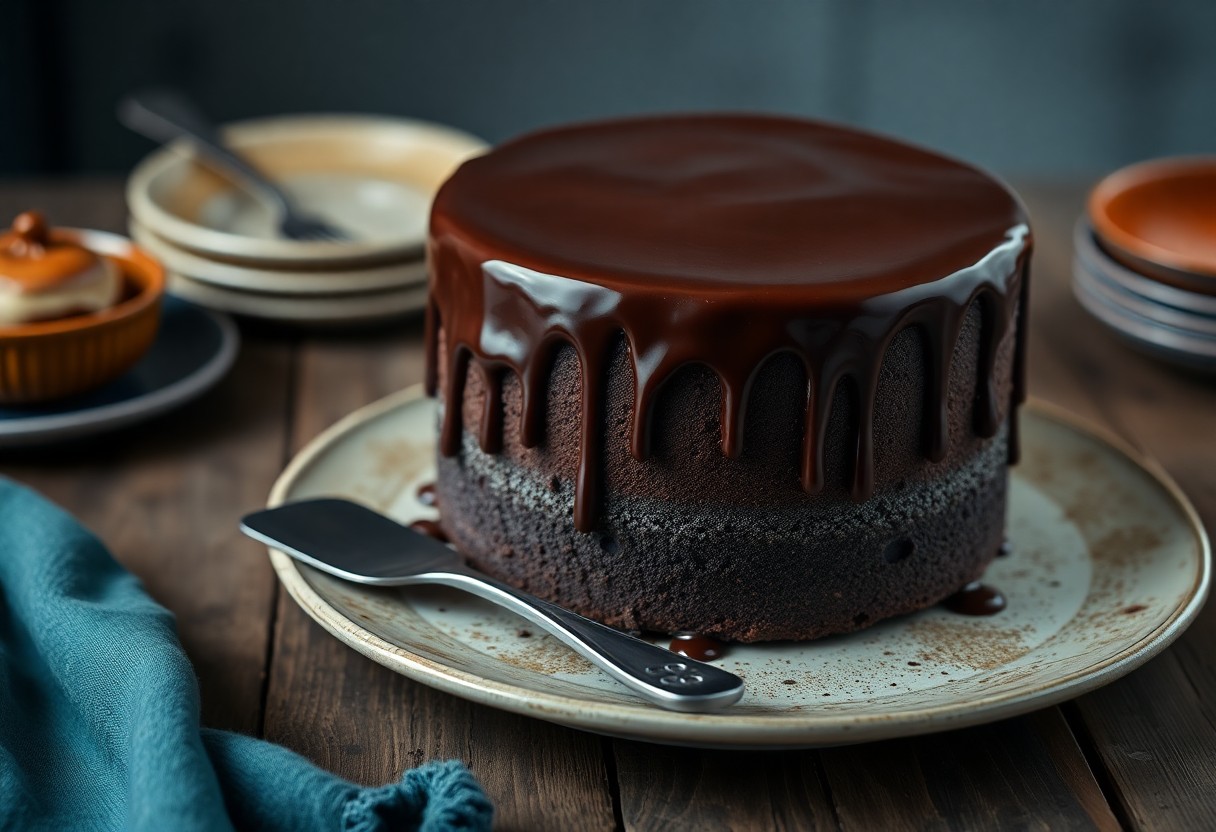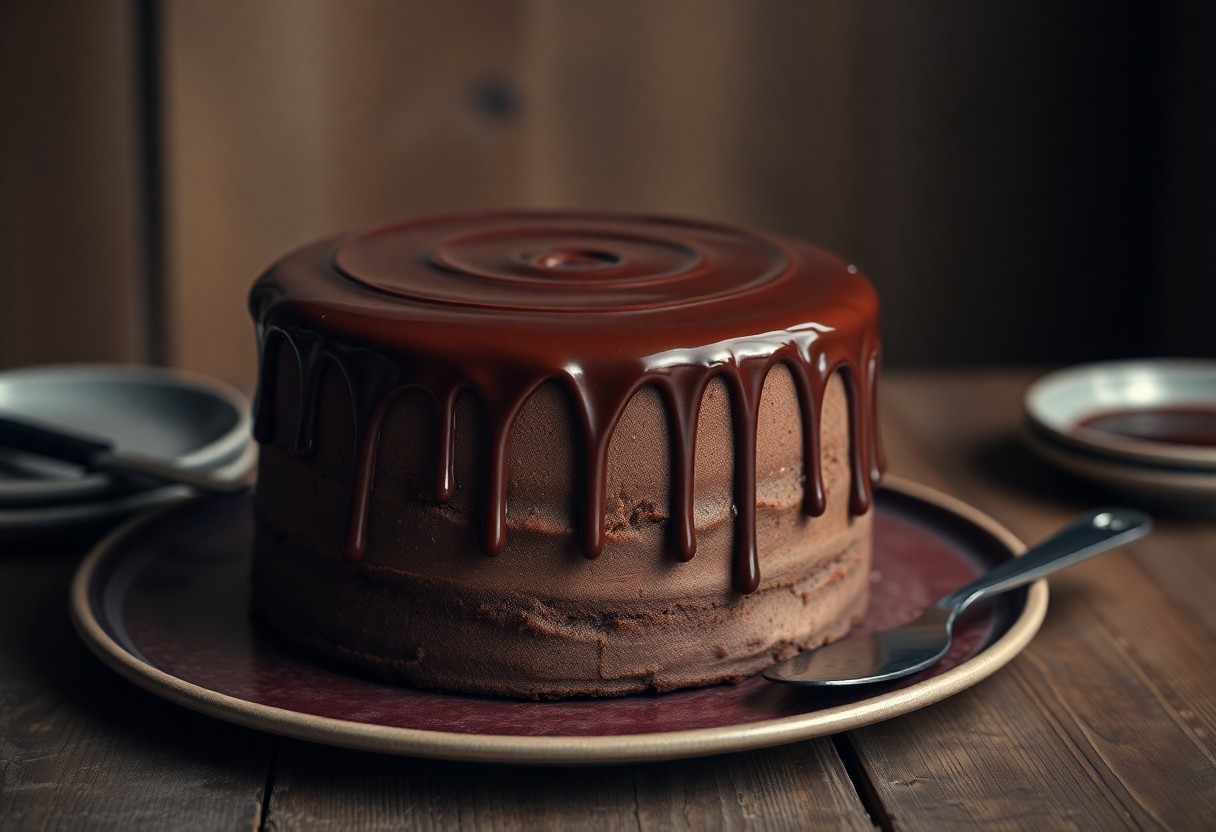Many bakers wonder if they can frost a cake with ganache, and the answer is a resounding yes! Not only does ganache create a rich and decadent flavor, but it also offers a stunning finish for your baked creations. In this post, you’ll discover the simple steps to successfully frost your cake with ganache, ensuring it looks beautiful and tastes amazing. So, get ready to elevate your cake decorating skills and impress your friends and family with your delightful dessert!
Key Takeaways:
- Ganache can be used as a frosting for cakes, providing a rich and glossy finish.
- The temperature of the ganache is important; let it cool to the right consistency before applying it to achieve the best results.
- Ganache can be flavored and colored to match various cake themes, offering versatility in cake decoration.

Understanding Ganache
While ganache is a versatile and rich mixture of chocolate and cream, it serves as more than just a filling for desserts. By understanding its composition and varieties, you can unlock its potential to enhance any cake, transforming it into a breathtaking centerpiece. Ganache is celebrated for its silky texture and intense flavor, making it a favorite among bakers and chocolate lovers alike.
What is Ganache?
On one hand, ganache is a simple mixture made by heating cream and mixing it with chocolate, creating a glossy and decadent ingredient. The ratio of chocolate to cream can vary depending on the desired outcome, making ganache adaptable for various uses, from frosting to truffles.
Different Types of Ganache
Ganache can be categorized based on the ratio of chocolate to cream and fat content used, leading to different textures and applications. Here are some common types:
- Traditional Ganache: Utilizes equal parts chocolate and cream for a rich consistency.
- Thinner Ganache: Usually made with more cream, perfect for pouring over cakes.
- Thicker Ganache: Contains less cream, ideal for firm frosting.
- Flavored Ganache: Incorporates extracts (vanilla, mint) or liqueurs for added depth.
- White Chocolate Ganache: Made with white chocolate for a sweeter alternative.
Assume that your choice of ganache type can significantly impact the flavor and texture of your cake.
| Type | Description |
| Traditional Ganache | Equal parts chocolate and cream. |
| Thinner Ganache | More cream for a pourable consistency. |
| Thicker Ganache | Less cream for a firmer texture. |
| Flavored Ganache | Incorporates extracts or liqueurs. |
| White Chocolate Ganache | Made with white chocolate. |
Another key to mastering ganache lies in understanding its variations based on ingredients and applications. For instance, traditional ganache is perfect for frosting, while thinner ganache is ideal for glazing. Conversely, flavored ganache can elevate your dessert with unique tastes. Utilize these variations to match your creative vision:
- Traditional Ganache: Rich frosting or filling.
- Thinner Ganache: Excellent glaze.
- Thicker Ganache: Sturdy for cake decorating.
- Flavored Ganache: Unique taste experiences.
- White Chocolate Ganache: Sweet and creamy options.
Assume that knowing these variations will give you flexibility in your cake designs and flavor combinations.
Preparing Ganache for Frosting
Some might wonder about the process behind creating the perfect ganache for frosting. To achieve a silky, luscious texture, it’s necessary to follow specific steps in preparation. The right balance of chocolate and cream, along with proper heating methods, can elevate your cake to a new level of decadence.
Ingredients Needed
The necessary ingredients for ganache are high-quality chocolate and heavy cream. Depending on your preference, you can adjust the ratio; a higher chocolate ratio will yield a thicker ganache ideal for frosting, while more cream will create a pourable consistency suitable for glazing.
Techniques for Perfect Ganache
One of the keys to achieving perfect ganache is to ensure that your cream is heated just right before combining it with chocolate. This can prevent separation and curdling.
In fact, heating your cream until it is steaming (but not boiling) ensures that the chocolate melts evenly and creates a smooth texture. Pouring the cream over chopped chocolate and allowing it to sit for a minute before stirring helps to develop a glossy finish. Additionally, using a whisk instead of a spoon can greatly improve emulsification, ensuring that your ganache has a light, airy quality that makes it perfect for frosting. Don’t rush this process, as patience really pays off!
Cooling and Whipping Ganache
Keep in mind that the key to achieving a perfect ganache lies in the cooling and whipping process. After you’ve combined your chocolate and cream, allow the ganache to cool to room temperature. This cooling phase is crucial, as it helps the ganache thicken properly for frosting. Once cooled, the ganache should have a smooth and glossy texture that is ideal for spreading or piping onto your cake.
Proper Cooling Methods
Proper cooling methods for ganache include allowing it to sit at room temperature or placing it in the refrigerator if you’re in a hurry. However, be cautious not to refrigerate it for too long, as this can make it too stiff. Optimal cooling will ensure that ganache becomes the perfect consistency for spreading. You want your ganache silky and rich, providing the best surface for a delicious cake frosting.
Tips for Whipping Ganache
Any successful ganache whipping requires attention to detail. To achieve a fluffy and spreadable ganache, consider these effective tips:
- Use a whisk or electric mixer for best results,
- Whip once the ganache is at the right consistency,
- Make sure your ganache has cooled completely before whipping,
- Don’t over-whip, as this can lead to a grainy texture.
Perceiving the right texture is the key to beautifully frosting your cake.
Whipping your ganache not only enhances its texture but also elevates the overall appearance of your cake. Aim for a light and airy finish, ensuring that it holds its shape when piped. You can achieve this by gradually increasing the speed of your mixer as you whip:
- Start slow to avoid splatter,
- Gradually build speed,
- Check consistency frequently—look for a soft peak.
Perceiving the visually appealing texture will make your cake a stunning centerpiece.
Frosting the Cake
To achieve a beautifully frosted cake, start by ensuring your ganache is at the perfect consistency. Allow it to cool slightly, then pour it over your cake, letting it drip down the sides for that luscious look. Use a spatula to spread any excess evenly, creating a smooth, glossy finish. This method allows you to create a stunning presentation while maintaining a rich, chocolatey flavor.
Tools and Equipment
Against a backdrop of chaos, you want to keep your frosting process smooth and efficient. Gather necessary tools like an offset spatula, a cake turntable for ease of movement, and a whisk for preparing the ganache. Having parchment paper underneath your cake can catch any drips and keep your workspace neat, allowing for a stress-free frosting experience.
Step-by-Step Frosting Guide
One of the keys to a perfect ganache frosting lies in the steps you take. Follow this structured guide to create a professional-looking finish:
| 1. Prepare Your Ganache | Heat cream and pour over chopped chocolate, whisk until smooth. |
| 2. Cool the Ganache | Let it cool to a pourable consistency (around 90°F). |
| 3. Position the Cake | Place the cake on a turntable or a serving plate. |
| 4. Pour the Ganache | Starting from the center, pour ganache to let it cover the top. |
| 5. Spread and Smooth | Use an offset spatula to smooth the sides and top as needed. |
StepbyStep, this guide will take you to cake-frosting success. Make sure to check the ganache temperature before use; too hot can result in runny frosting, while too cold can lead to difficulty in spreading. A thin, even layer is ideal for achieving that professional finish you desire. Take your time and enjoy the process, as the effort will be reflected in your cake’s delightful appearance and taste!
Decorating with Ganache
Many bakers love using ganache not just for its rich taste but also for its versatility in cake decorating. The smooth texture allows you to create glossy finishes, drip effects, and even intricate designs. Whether you choose to pour it over your cake for a luscious glaze or use it for detailed piping work, ganache adds a professional touch to your baked creations.
Creative Techniques
Between pouring, swirling, and drizzling, ganache can be transformed into stunning visual displays on your cake. Experiment with different consistencies by adjusting the chocolate-to-cream ratio. You can achieve a pourable ganache for drips or a thicker mixture for frosting and borders. Adding gentle swirls with a spatula can create unique textures that elevate your cake’s overall presentation.
Flavor Pairings
An excellent way to enhance your ganache is by pairing it with complementary flavors. Dark chocolate ganache pairs beautifully with vibrant fruits like raspberries and oranges, while milk chocolate enriches flavors like caramel and vanilla. Incorporating spices such as cinnamon or espresso can add depth, transforming your cake into a gourmet experience.
Techniques for flavor pairing are vital skills that you can master to elevate your ganache. Start by selecting the right chocolate base—whether it’s high-quality milk, dark, or white chocolate. Then, explore infusions such as herbs or citrus to create unique blends. Additionally, consider incorporating liqueurs or extracts to deepen the flavor profile. By combining chocolate ganache with ingredients like spicy chili or fresh mint, you open endless possibilities for your cake, ensuring a deliciously harmonious bite every time.

Troubleshooting Common Issues
After working with ganache, you may encounter some challenges that require troubleshooting. From improper consistency to uneven application, these issues can affect the overall look and taste of your frosting. Addressing these problems early can save you time and effort, ensuring a smooth and beautiful finish on your cake.
Common Problems and Solutions
On occasion, your ganache may be too thick or too runny. If it’s too thick, gently warm it in the microwave or over a double boiler, stirring until it’s spreadable. If your ganache is too runny, let it cool until it thickens. In both cases, trial and error while adjusting the chocolate-to-cream ratio will help you achieve the desired outcome.
FAQs about Ganache Frosting
Across the board, people often have questions about ganache frosting, including its versatility and how to store it. You might wonder if ganache can be made ahead of time or whether it pairs well with different flavor profiles. These factors can significantly impact your baking experience and the final result, leading to a successful cake.
Consequently, if you are curious about ganache frosting, here are some key points: you can prep ganache ahead of time and store it in the fridge for later use—just make sure to warm it slightly before frosting your cake. When experimenting with flavors, dark chocolate ganache pairs wonderfully with fruity or creamy fillings, while white chocolate ganache complements tart flavors beautifully. By knowing these details, you can confidently integrate ganache into your baking repertoire.
Conclusion
With these considerations, you can confidently frost your cake with ganache to create a stunning and delicious dessert. By mastering the techniques of temperature and spreading, you ensure an even, smooth finish that showcases your baking skills. Whether you choose a silky chocolate ganache or a decadent flavor variation, it’s the perfect way to elevate your cake presentation. Enjoy the process and indulge in the delightful results!
